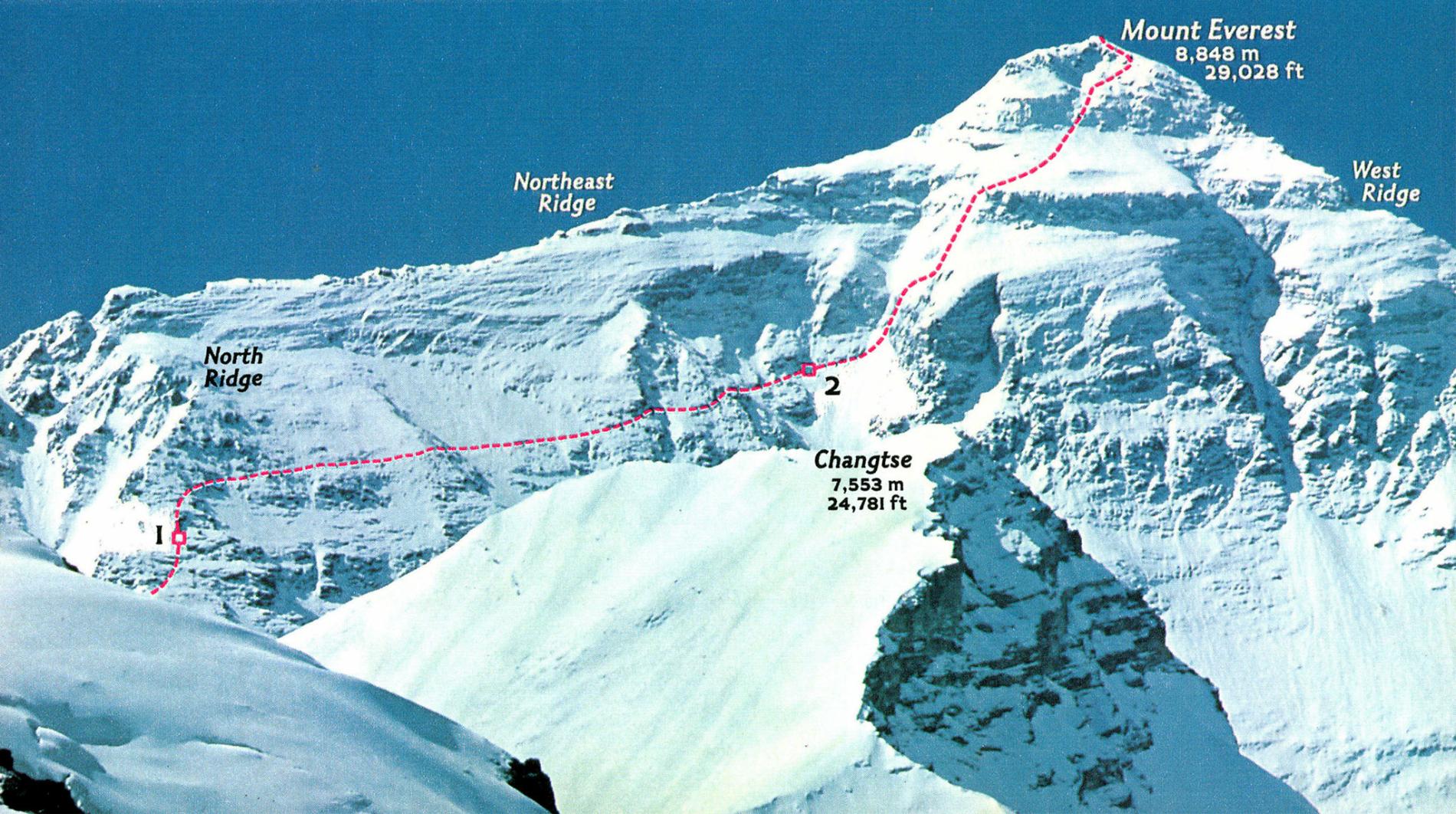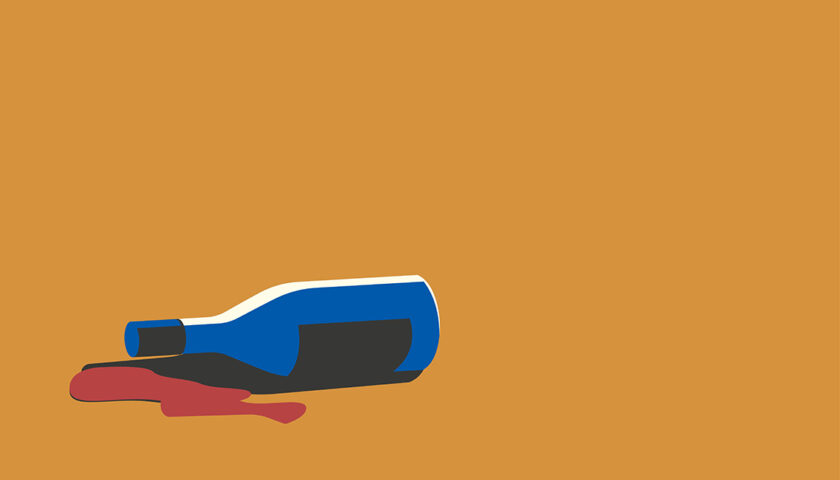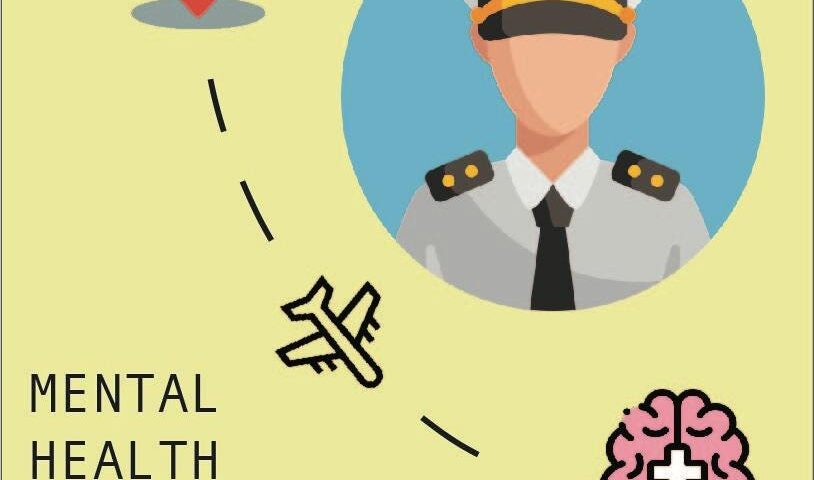I will come again and conquer you because as a mountain you can’t grow….
But as a human, I can.
Sir Edmund Hillary
Mount Everest, Sanskrit and Nepali Sagarmatha, Tibetan Chomolungma, Chinese (Pinyin) Zhumulangma Feng or (Wade-Giles romanization) Chu-mu-lang-ma Feng, also spelt Qomolangma Feng, mountain on the crest of the Great Himalayas of southern Asia that lies on the border between Nepal and the Tibet Autonomous Region of China, at 27°59′ N 86°56′ E. Reaching an elevation of 29,035 feet (8,850 metres), Mount Everest is the highest mountain in the world.
Sqn Ldr Toolika Rani (Retd) women officer of Indian Air Force has scaled many heights, including Mt Kilimanjaro the highest peak in Tanzania, Mt Damavand the highest volcano of Asia, Mt. Stok Kangri, Mt. Kanamo, Mt. Bhagirathi 2, Mt. Kamet, Mt. Saser Kangri, Mt. Elbrus, Mt. Nun. Toolika has done 22 mountaineering expeditions and treks in India, Bhutan, Nepal, Africa, Iran and Russia. In this article, we will find what motivates this young and gusty lady.
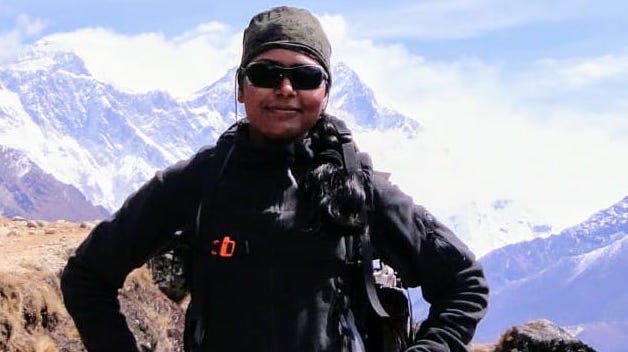
Q: You were part of first IAF women expedition to Mt. Everest, what motivated you to be part of the team? Had you done any adventurous expeditions or mountaineering before?
Ans: My urge to be with nature and an insatiable desire to explore the unknown. I have a fascination with D. H. Lawrencian style of pre-industrial existence in the lap of nature and have admired Wordsworth’s poetry along with Ruskin Bond’s narration of a walk in the hills, Mahadevi Verma’s warm attachment with Gillu- the squirrel. Outdoors are an instant yes for me and anything that takes me away from the maddening hustle-bustle of city life draws my attention. The speed at which a professional life runs hardly leaves you any time to admire the myriad wonders of nature lying around, therefore I always long for a break where time slows down, where you can get in touch with your inner being. So, it was this inclination of mine which made me volunteer for the Everest expedition. Though initially, I did question my readiness for such a herculean task, since Everest evokes that massive image which frightens you first, yet I decided to give it a try thinking that if I was not up to the mark, there was always a possibility to quit. Why leave an opportunity because of the doubt when it has literally knocked on your door and be in suspense/regret all life as to what could have been if I had taken the chance?
When the signal asking for volunteers for Mt. Everest Expedition (scheduled in 2011) was released in 2009, I had already done the Basic Mountaineering Course and had participated in River Rafting Camp cum competition on Indus River in Sonamarg. So, the adventure had already ventured into my life. The conception of IAF Everest expedition gave it a direction.
Q: What was the selection criteria for the team as it was one of the toughest expeditions? What was the training curriculum before the expedition?
Ans: The criteria was the Basic Mountaineering Course so that the members are familiar with the basic concepts and techniques of mountaineering. Physical fitness was another requirement.
The pre-Everest training was scheduled for two years from 2009-2011. It was a brilliant plan conceived by the Directorate of Adventure, exposing the members to various peaks gradually increasing in terms of altitude and technicality. Thus we were taken to Mt. Stok Kangri (6121M, Leh), Mt. Bhagirathi-II (6512 M, Uttrakhand), Mt. Kamet (7757M, Uttrakhand), and Mt. Saser Kangri (7672M, Leh). We were also trained at Army Mountaineering Institute in Siachen Glacier twice in Jan 2010 and 2011 to hone our ice craft skills and expose us to extreme cold conditions.
In addition, the team used to gather at Dte of Adventure 7-10 days prior to each expedition and workout under the supervision of a qualified coach. Before Everest 2011, we were trained by Gp Capt Chandola, a sports medicine specialist who taught us to work out in the gym and on the field with a scientific attitude.
It is not the mountain we conquer but ourselves.
Sir Edmund Hillary
Q: How many team members were selected and what was their expertise?
Ans: The IAF Everest team 2011 consisted of 20 members, out of which we had 11 women officers. The climbing permit was obtained for 14 members, rest played an important supportive role.
Most of the team members were trained athletes (barring me) and some male members including the leader were experienced mountaineers.
Q: Prior to selection for expedition, did you undertake any special routine to build up your stamina and strength?
Ans: I used to run with a backpack and ankle weights of three kg in each leg to simulate the weight of climbing boots that weigh 1.5 kg each. The ankle weights became a part of my body and I used to wear them 24 hrs, even while going to office and parties. To practise climbing, I started climbing a water tank behind Officers’ Mess for two hours on alternate days, in addition to regular gyming. I would leave no opportunity to climb stairs, be it in a mall, railway station or a building. I added variety in my workout to develop endurance, flexibility, speed, muscle mass, limb coordination, balance and enhancement of lung capacity through a combination of long slow runs, sprints, strides, weight training, yoga and pranayama. Special care was accorded to diet and sleeping/waking time. I followed a strict routine and had to forgo social outings for a while.
Q: Tell our readers about any incident which changed your outlook towards mountaineering especially in view of medical fitness, weather and mental strength?
Ans: Unlike some of my team members, I wasn’t a natural climber; I didn’t have their speed but I put in a lot of endurance and consistency into climbing. Post our second training expedition to Mt. Bhagirathi in 2009, I accidentally happened to read the expedition report in which it was mentioned that along with some members, my performance would be watched for inclusion in final Everest team. This sentence got etched in my mind and it spurred me day and night to improve my fitness. I kept circling the road around the Officers’ Mess in Jamnagar, running with my backpack and ankle weights. This is when the moniker, “the crazy girl who keeps running” got associated with me. Thus, I arrived for the next expedition to Mt. Kamet in a very fit shape.
Kamet taught me many lessons. Our team was climbing well and the first group had reached the summit camp, while we in group-2 were a camp below and I was enthusiastically looking forward to going up, thinking that it’s just a matter of a day and a night between us and the summit. But, the next morning, we were asked to stay put by the leader as the weather was turning bad and later were instructed to wind up the camp and go down. The goal that had seemed so close suddenly turned not only distant but out of reach. From this I learnt that anything can change any moment, so do not get too euphoric when near the goal until it’s done.
On our way down, we were engulfed by a snow blizzard for six hours, struggling desperately for our lives. 60km/hr winds, nil visibility, the temperature in minus, snow flying about and whipping our faces, numb fingers, traverse on a treacherous terrain all together made each step a hell and I constantly felt like detaching myself from the rope, fall down in the valley and end the misery. But I continued and survived. Seeing death up so close, I started valuing life even more and since then, difficulties and hardships became challenges to be enjoyed and faced bravely, not to be cribbed about.
Climbing to the top demands strength, whether it is to the top of Mt Everest or to the top of your career.
Abdul Kalam
Q: Mountaineering is more of mind game than physical fitness and strength. Can you elaborate?
Ans: Mountaineering requires hours and hours of continuous climbing in extreme cold and dangerous terrain with significant load on your back. The altitude effect drains twice the energy to take each step and however much you train, beyond a point your body starts complaining of fatigue. It takes a very strong mental make up to push yourself ahead in the face of such hardships, especially when you have an option to return to the comparative safety and comfort of the camp. I have experienced these moments when my mind has taken over my body and has propelled my limbs to take one more step ahead. Also during emergencies such as a fall, injury or illness which is very common during climbing, staying calm and resilient determines one’s survival chances. The miraculous survival of the legendary Maurice Herzog on Mt. Annapurna (1950) and of Joe Simpson on Siula Grande (1985) on which the famous movie ‘Touching the Void’ is based are best examples of how a strong mind can pull you through even seemingly impossible situations. During my climbs, I have fallen down an ice wall, survived a snow blizzard, had to do an unplanned bivouac (a night out under a plastic sheet in mountains), had frostbite in my toes, slipped on a narrow path underneath which a river was flowing, have rolled down the mountain during which I thought I am going to tumble down all the way, witnessed crazy winds threatening to uproot the tent and take us along sitting inside for a ride down the valley and other usual happenings such as nausea, headache, fever, vomiting, chest pain, crushing cough etc., which every mountaineer gets used to. So, it’s just the mind that pushes one through all this.
Q: Can you please tell our readers about the first expedition to Mt. Everest in which you had turned back while some of the members had successfully reached the summit. What were your feelings?
Ans: In 2011, I along with five teammates had climbed up to camp-II at 21,500 feet as part of the first group to go for summit attempt but three of us got fatigued and had to stay put at Camp-II while the rest three went up next day. The second group was scheduled to arrive Camp-II a day after along with which I was supposed to head up after recuperating. But it got delayed due to weather and we got stuck at camp-II. At this altitude, the body deteriorates rather than recuperating. However, I started climbing up with the second group but after a while started feeling cold in my fingers. Attempts to warm them failed and the cold seeped into my chest. The weather was misty, and I thought that if I continue, my condition would only get worse with altitude, I would become a burden on my team and hence decided to turn down.
The moment I took my steps back, the realisation sank in that the Everest dream for which I had worked so hard for two years was over. Tears rolled down my cheeks and got frozen there. It was a sinking feeling. What I didn’t realise then was that it had seeped deep within me and wasn’t going to let me release the pain the usual way. On the way back, having a last look at the mountain, I promised that I will come back.

Q: You were lucky the second time, can you describe the hurdles you faced while undertaking the expedition this time on your own.
Ans: The first challenge was to mobilise finances. I wrote letters to a prominent adventure foundation and got in touch with them but couldn’t secure a sponsorship since I was working in Forces and having a restriction on interaction with the press, I didn’t provide any opportunity for publicity to the corporates. IAF had no policy/precedence for individual Everest expedition, thus couldn’t help me, though I received full moral support, encouragement, leave grant as well as equipment from IAF without which the expedition wouldn’t have been possible. The maze of bureaucratic tape in government ministries was hard to navigate and thus I took out my savings, and with my family’s support, gathered the required Rs. 21 Lakhs.
Managing ATC shifts and extreme fitness levels, and in between a promotion course was tough but not impossible. I utilised each second and became hyperactive in managing my various activities. During the climb, I had mountain sickness at the same Lhotse wall from where I had returned the previous year, but I recuperated and felt strong afterwards. On the last leg of the climb, towards the summit, I started feeling cold in my foot but taking anti-frost bite pill, I decided to continue and climbed all night in pain. Finally, on the morning of 26 May 2012, I could reach the top of Mt. Everest. I had to descend to Base Camp with frostbitten toes and be hospitalised for three months, but have recuperated and continued climbing thereafter.
Q: How was second expedition different from the first one?
Ans: During the preparation for the second attempt, I had trained my mind harder to overcome the fear of death or injury, was more determined and less emotional. More was on the stake as I had taken my full year’s entitlement of leave in one go, mine and my family’s savings, my reputation and self-esteem. It gave me the strength to tap deeper into my inner reserves and brought me redemption in my own eyes.
Q: How much time did you spend at the summit? What were your thoughts while at the summit?
Ans: I spent half an hour at the summit, resting a while and taking photographs and video for proof. The first thought was of immense relief as it had been a hard climb of 11.5 hrs in the dark night with excruciating pain in my toes. Then a feeling of gratitude dawned for being alive since we had passed the bodies of deceased climbers which was a gory reminder of all that was possible at such altitude. Thereafter a concern for descending safely as it’s on the way down that most accidents happen because the climber is weary, and a little complacent after a successful ascent. The steep gradient makes it easier to lose balance while descending as compared to the ascent. Only on reaching back the summit camp after a total of 17 hrs of climbing in the death zone, the realisation dawned that the task that had engulfed me for the past three years was finally done! The spectre of Everest would finally stop to haunt me! I lay down under the open sky near my tent and let my frozen tears be burst out into loud sobs.
Q: Everyone remembers the struggle and hardship while undertaking such an expedition, but the moment you reach there all those tough days and experiences are washed with sweat memories. Do you agree?
Ans: Yes, climbing is difficult but very rewarding. Importantly, the evolution a person goes through while climbing, the enhanced awareness of one’s own strengths and weaknesses are like having an interview with oneself. The cold, the danger, the uncertainty bring out the inner resilience which we witness only during adversity. It increases one’s confidence and alters one’s perspective towards life. You get into the habit of putting sustained efforts for long duration in the pursuit of a goal and keeping hope alive during failures. Standing atop a mountain, feeling the exhilaration of being one with the universe; these surreal achievements and moments come only after very hard work and that’s why they are so sweet. They reaffirm your faith in the power of human will, that’s why they are so reassuring and addictive.
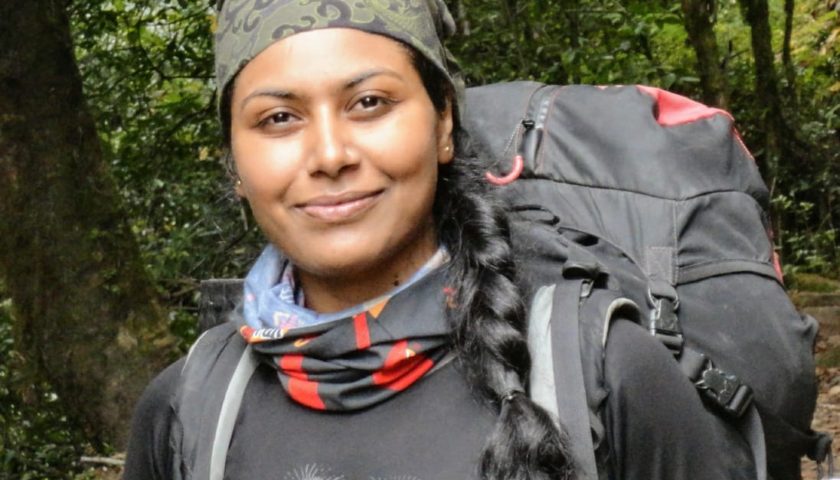
Sqn Ldr Toolika Rani (Retd) was commissioned in IAF in Dec 2005 in Administration Branch. She served for ten years as an ATC officer and Outdoor Training Instructor in Air Force Academy. An adventure enthusiast, she has done 23 mountaineering and trekking expeditions all around the world and holds the distinction of being the first woman from U.P. to climb Mt. Everest in 2012 and the first Indian woman to climb Asia’s highest volcano Mt. Damavand. She has been felicitated with 8 awards including Rani Laxmibai Veerta Puruskar, FICCI FLO Outstanding Global Woman Award etc. She has delivered 50 motivational talks across India, and is a writer, poet and research scholar, doing PhD on mountaineering (Sherpas of Nepal).
Related Article: Marching ahead, Women officers of Indian Armed Forces. Click to read.
Related Article: Women voices in Military Aviation. Click to read.
Related Article: What are you waiting for. Click to read.
